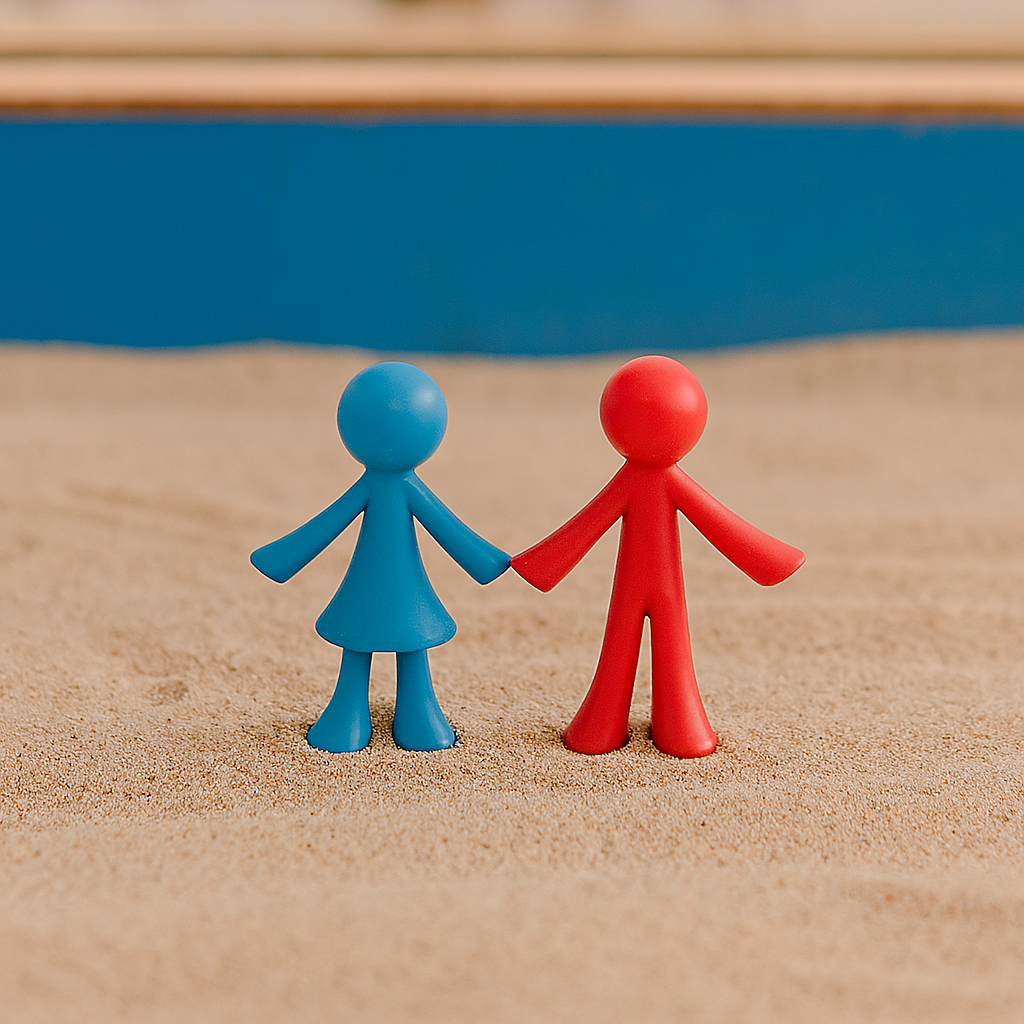The Top 3 Miniatures Kids Use to Represent Parents in the Sand
A peek into what children may be telling us about connection, perfection, and distraction
I believe that every miniature in a sand tray tells a story—and when it comes to how children view their parents, the miniatures they choose are powerful windows into their world.
Over hundreds of sand tray sessions, I've noticed a few patterns that have emerged in the miniatures kids select. These are the top three miniatures most frequently chosen to represent parents in my sessions across the years. What they reveal is both heartwarming and heartbreaking.
#3 – Colorful Family Counters
These generic, simple figures in a variety of colors show up constantly in sand trays. Why? Because they are versatile, neutral, and carry just enough personality without being too specific.
Kids often use them when:
They don’t feel close to the parent.
The parent is more of a “placeholder” in their life.
They are trying to show structure or relationship roles.
But here’s the fascinating part—often a child chooses a figure of the same color as their own to represent a parent, it often reflects a strong attachment:
“This is me and this is my mom—we’re both blue. We belong together.”
💡 Play therapist tip: Keep several of these in different colors to give kids options for representing connection—or distance.
#2 – The Bride and Groom
The classic wedding couple (either joined or as separate miniatures like these) is a favorite among younger children, who often idealize their parents.
These figures show up when:
A child sees their parents as magical or perfect.
The parents present a “picture-perfect” image to the world.
The child wants to express longing for harmony between their parents.
Sometimes these show up in a sweet fairy tale way of children who idolize their parents, but sometimes, children use them to explore disconnection, perfectionism, or even emotional distance:
“They always smile like this in front of people, but at home they don’t talk.”
💡 Play therapist insight: Look for what surrounds the figures. Is there distance? A wall? Another figure in between? The story might be deeper than it seems.
#1 – The Distracted Person on a Phone
This one might break your heart a little.
The most-used miniature to represent a parent in my practice is this figure—hunched over, eyes on a device, unaware of the world around them.
Kids and teens use it to say things like:
“My parent is always busy.”
“They don’t really see me.”
“I want them to put the phone down and just be with me.”
Even when it’s placed lovingly, this figure almost always comes with a message of longing. Most often, the child just wants to be close and feel noticed.
💡 Parenting tip: Try giving your child five minutes of undivided, phone-free attention each day. It sounds small—but it builds a big bridge.
Final Thoughts for Play Therapists
These three miniatures are a must-have in every sand tray collection. They’re powerful, symbolic, and used across a wide range of ages and presenting concerns.
Click below to grab these for your own collections (note: these are affiliate links which means I make a small commission if you choose to purchase at no cost to you!)
Generic People Figures (Bonus: this set includes houses to further encourage exploration of family dynamics!)
Every miniature matters. But some, like these, seem to speak directly from the heart of the child.


